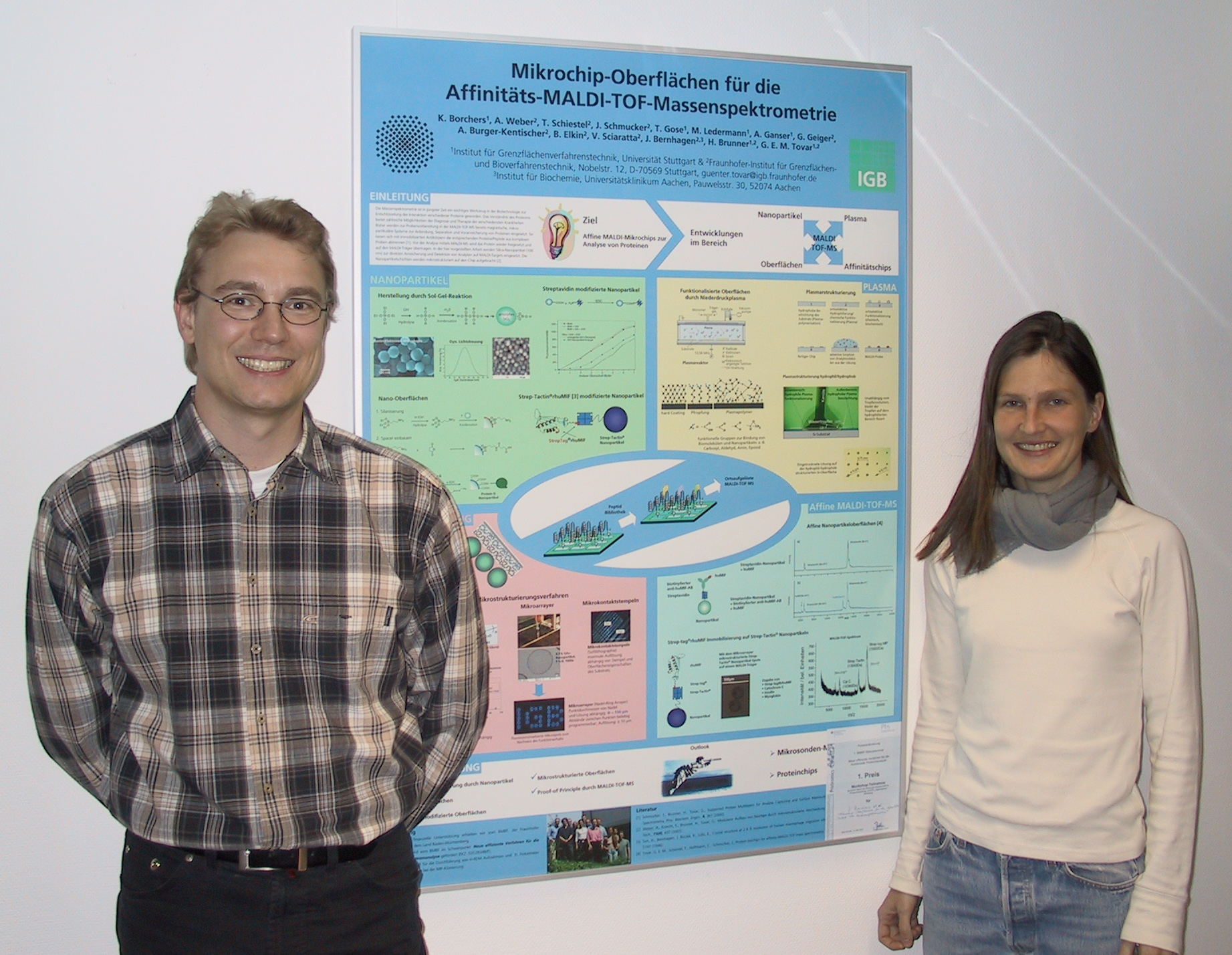Identifying proteins with new microchip surfaces
Protein microchips can be used for the diagnosis of diseases. Researches at Fraunhofer IGB have developed a novel chip surface consisting of protein binding nanoparticles. These nanoparticles enable the direct enrichment and analysis by MALDI-TOF mass spectrometry.

How does life function? In biology today, this is the question about the interplay between the countless molecules that make up all life forms. For example, if the interactions of proteins are interfered with, this can be a cause of illnesses. Nowadays, bio-chips are being used to an increasing extent to research these molecular interactions. Hundreds or thousands of known capture molecules (probes) are fixed on a carrier material made of glass, silicon or plastic. When they come into contact with a sample of, for example, blood serum or urine, the proteins from the sample bind only to the chip where they find a natural interaction partner as a capture. In this way it is possible to determine, for example, characteristic differences in the protein composition of the blood of patients and of healthy people.
At the Fraunhofer Institute for Interfacial Engineering and Biotechnology IGB in Stuttgart, Germany, a new type of protein chip is being developed based on protein-binding silica-nanoparticles. The surface of this minute particle with a diameter of less than one ten thousandth of a millimeter can be configured with many different capture proteins. The particles configured in this way are then applied to silicon carriers in thin, even layers. After contact is made with a sample, the chips can be analyzed using state-of-the-art mass spectrometry, MALDI-TOF mass spectrometry. Knowing the masses of the bound proteins provides a direct indication of their identity. Previously, the samples for MALDI-TOF mass spectrometry had to be prepared for the actual measurement in a multi-stage process. “Our nanoparticles enable us for the first time to directly enrich and measure the proteins“, says scientist Dr. Günter Tovar, head of the Fraunhofer IGB research group “Biomimetic Interfaces“. At the same time, greater sensitivity is achieved with the aid of the nanoparticles.
This type of nanoparticle protein chips will initially serve research as a tool. In the future, it will be possible to use them as diagnosis chips for the early detection of illnesses. The project, in which besides Fraunhofer IGB working groups from the universities of Gießen, Göttingen, Tübingen and Stuttgart (Institute for Interfacial Engineering IGVT) are involved, along with the companies BioCore GmbH and ThermoFinnigan MAT GmbH, is supported by the Federal Ministry of Education and Research BMBF. At the 1st BMBF status seminar on “new efficient procedures for functional proteome analysis“, which was held between 12th and 14th May in Bad Honnef, Kirsten Borchers and Dr. Achim Weber from Dr. Günter Tovar’s working group were awarded 1st prize for the presentation of their contribution. Over 100 participants had submitted contributions. Both scientific quality and originality were assessed for the award, along with the way in which the results were presented. The prize includes participation in a workshop organised by the German association of Proteome Research (DGPF).
 Fraunhofer Institute for Interfacial Engineering and Biotechnology IGB
Fraunhofer Institute for Interfacial Engineering and Biotechnology IGB